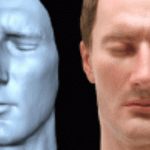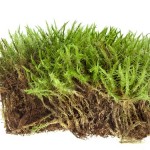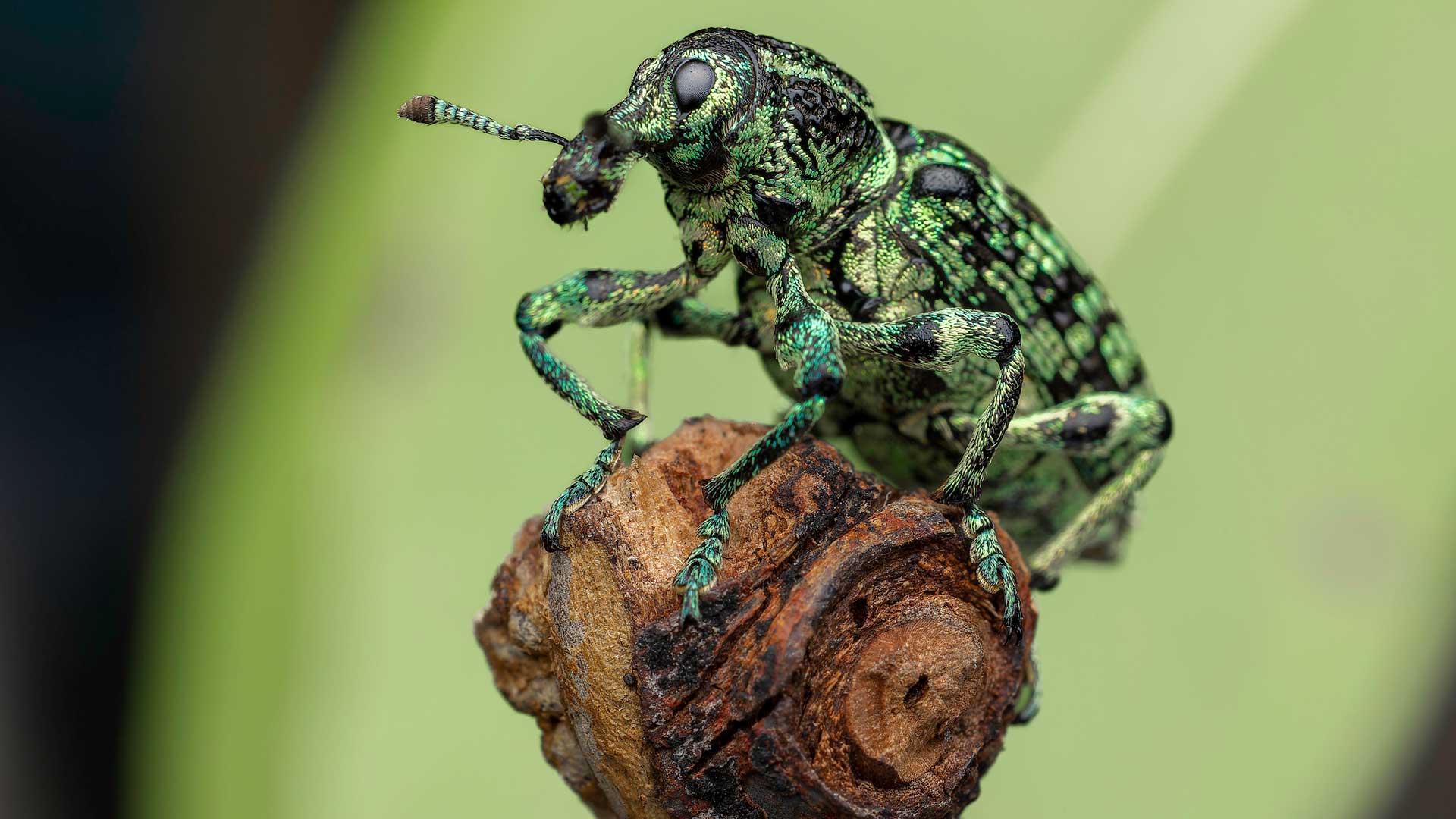
National Geographic’s series ‘A Real Bug’s Life’ returns on January 15th to Disney+ for a second season, this time including an episode dedicated to our unique Australian insect life. The production team shared their photography with Australian Science Illustrated for an article in our January 2025 issue: here are some of the best bugs that feature in the ‘Tiny Heroes Down Under’ episode of ‘A Real Bug’s Life’ S2…
Above & below:
BIG-NOSE WEEVIL: long snout helps weevils chew holes in plants for food and to lay eggs.
The NatGeo insect series enters an unseen micro-universe where miniature heroes use amazing superpowers to survive epic adventures and dramas. This Botany Bay weevil appears in the third episode titled ‘Tiny Heroes Down Under’.
The Botany Bay weevil (or ‘diamond beetle’) was one of the first insects described by outsiders when Joseph Banks collected one in 1770 after he landed with Captain Cook at Botany Bay. The beetle is still found there on acacia trees, adults on twigs and the larvae feeding on roots.
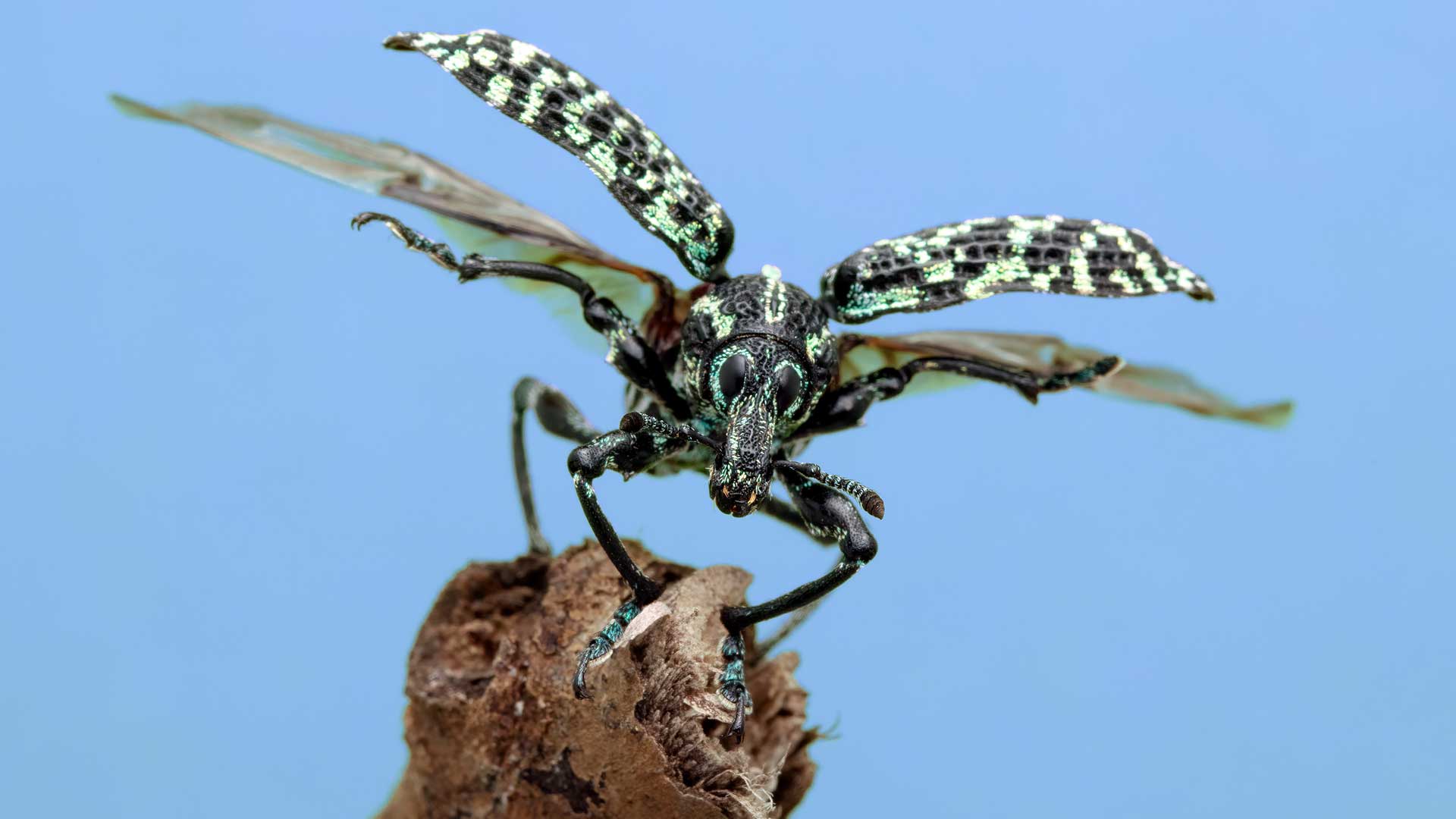
(National Geographic/Alan Henderson)
Below:
BEAUTIFUL PESTS: These harlequin bugs are bright and shiny, but can affect cotton crops.
Filmed in Melbourne, this hibiscus harlequin bug (Tectocoris diophthalmus) is likely a female; the males are mostly blue-red while the females are mostly orange. They feed on hibiscus, often gathering in large aggregations which can qualify as a minor pest for cotton farmers.
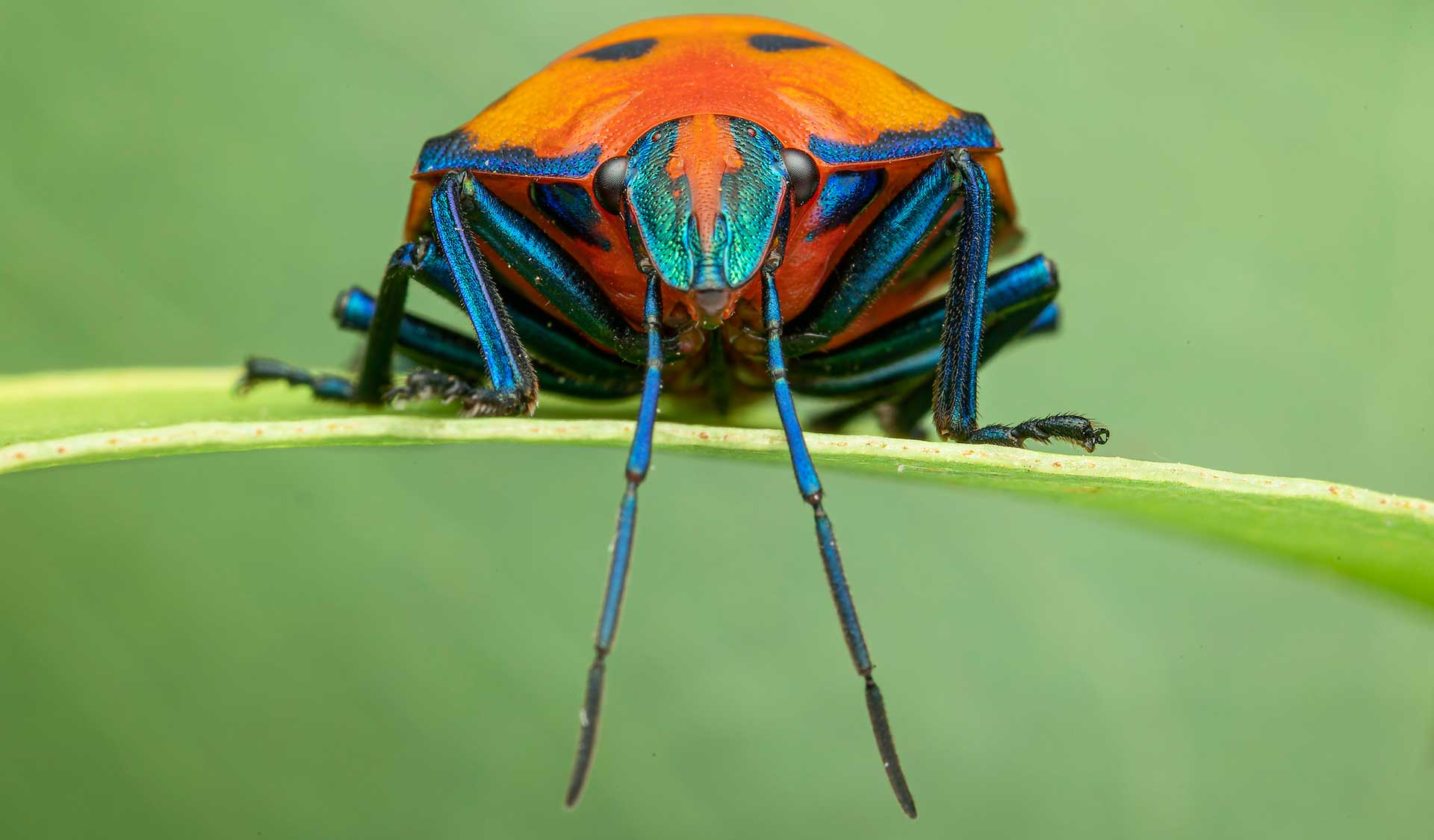
(National Geographic/Rob Morgan)
Below:
ORANGE ASSASSIN: Stabbing and poisoning from behind is the favoured kill for these bugs.
Assassin bugs are so called for the way they sneak up on prey from behind and then stab them, injecting deadly enzymes. Different assassin bugs are found across Australia; some are used to protect cotton crops from sucking insects like the hibiscus harlequin bugs!
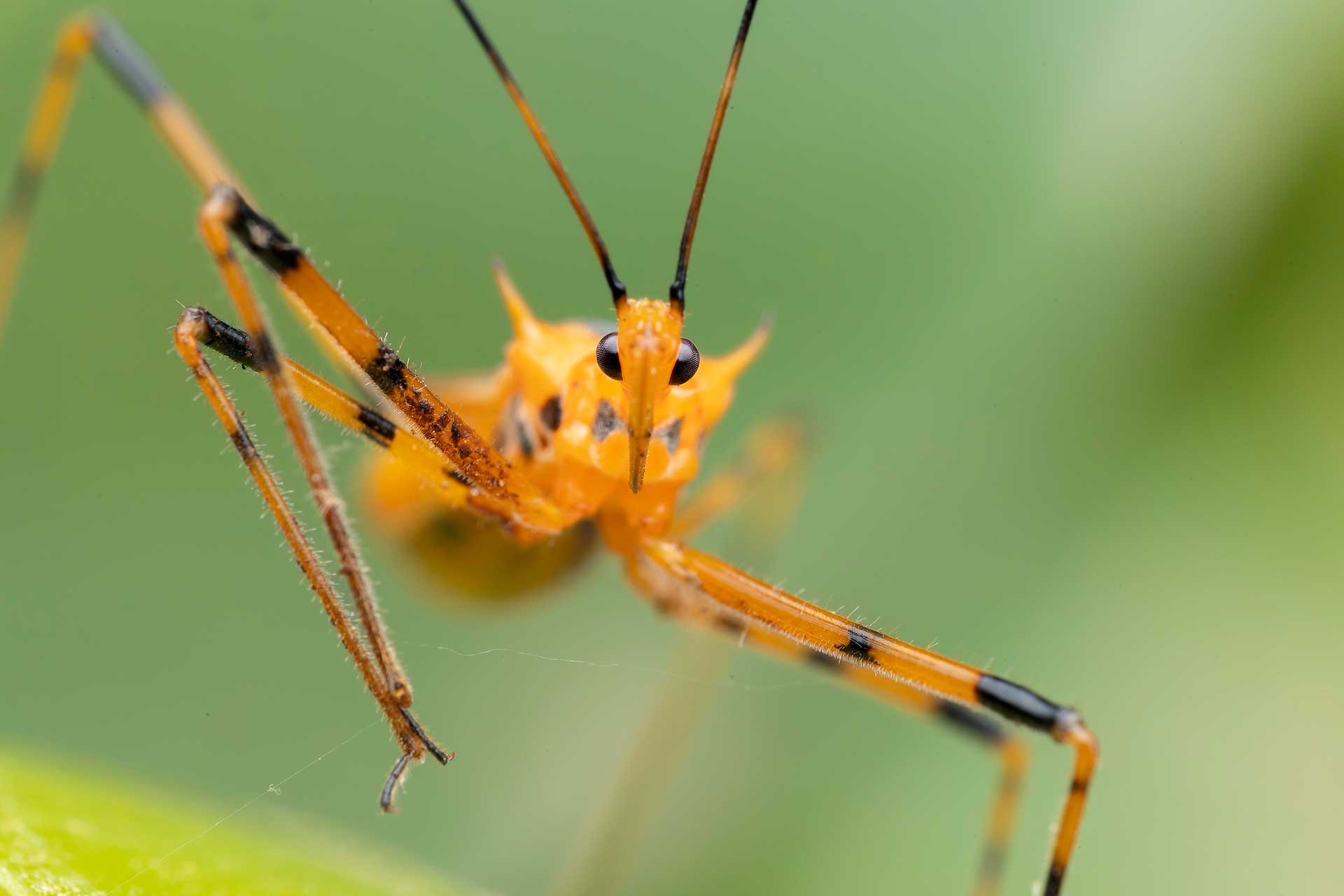
(National Geographic/Rob Morgan)
Below:
A WORLD OF BUGS: The new series films insect life in Australia, Borneo, the UK and the USA.
Invertebrate expert Alan Henderson gently places a mad hatter caterpillar onto a leaf on set during an outback shoot in Kuranda for the ‘Tiny Heroes Down Under’ episode of ‘A Real Bug’s Life’ S2.
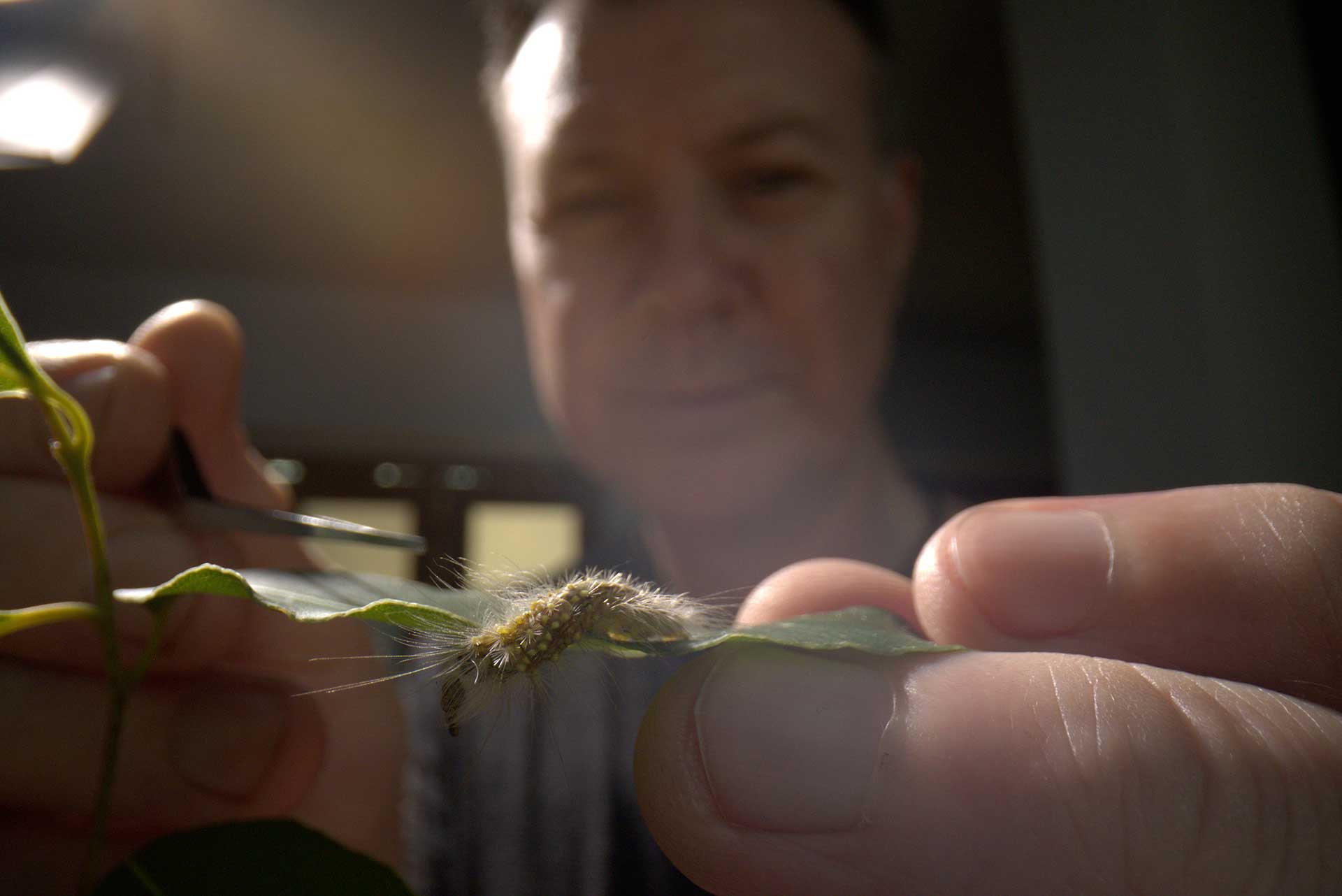
(National Geographic/Rob Morgan)
Below:
PEACOCK SPIDER
The male peacock spider creates a colourful display to entice a female; they can see into the UV spectrum.
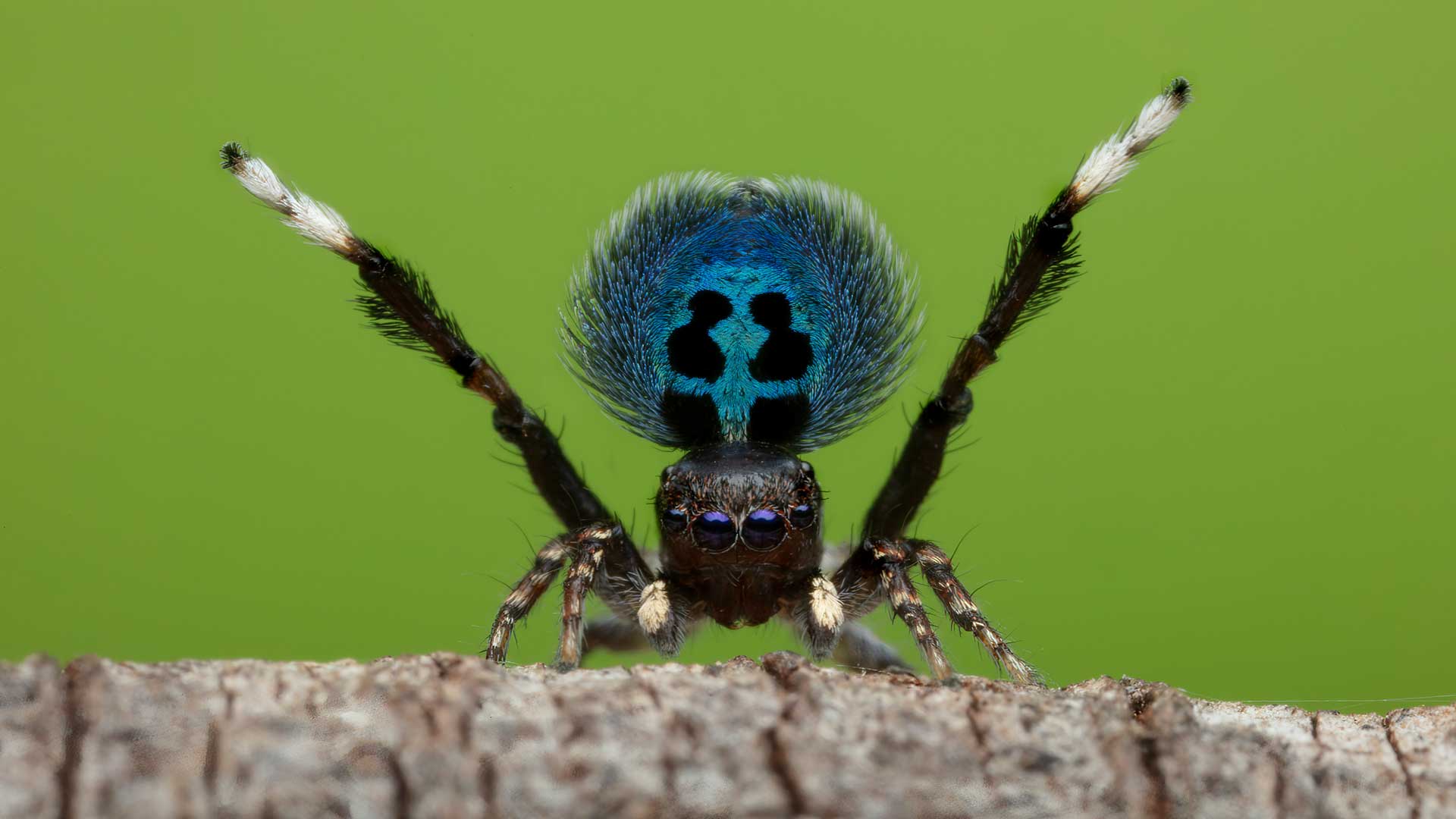
(National Geographic/Alan Henderson)
Below:
BIONIC BEETLE: Tiger beetles are predators which have speed on their side.
A beach tiger beetle is photographed head-on, in a scene from the second episode. Tiger beetles can be aggressive predators, and the fastest of the species can cover 125 times their body length in a second, the equivalent of a human running 100 metres in less than half a second.
National Geographic’s series ‘A Real Bug’s Life’ S02 starts January 15th to Disney+.

